Quiz - 97
# ISCCM Hyderabad Quiz 97🔭
- Identify the abnormality on the Echo of patient in cardiac ICU ❓
- Keep exploring, Keep learning ❗️
Quiz - 96
# ISCCM Hyderabad Quiz 96🔭
- You were doing the rounds in cardiac ICU and your registrar showed the chest x ray of a patient in shock.
- Identify the findings in his chest x ray ❗️

Quiz - 95
# ISCCM Hyderabad Quiz 95🧐
- An elderly patient with h/o chronic AF and previous history of stroke presented with chronic hypercapnia and corpulmonale.
- What does his polysomnography in pic 2️⃣ shows❓
- A device was implanted for him which resulted improvement of his symptoms. What was the device shown in pic 3️⃣ ❓
- Who’s the mythological character in pic 1️⃣ and how’s she related to above the disease ❓

Quiz - 94
# ISCCM Hyderabad Quiz 94🧐
- Q1. Who’s the physician being shown in pic 1️⃣ who’s discovery was considered to be “the greatest victory of mankind achieved over the disease”❓
- Q2. What is being shown in pic 2️⃣❓How is it related to pic 1️⃣❓
Ans1- Alexander Fleming.
Ans2- In 1928, Alexander Fleming observed that a mold, Penicillium notatum, had contaminated a culture of Staphylococcus aureus, and that the mold had inhibited the bacteria's growth, leading to the discovery of penicillin.
Accidental Discovery:
While working at St. Mary's Hospital in London, Fleming was studying influenza when he noticed that a petri dish containing Staphylococcus aureus cultures had been accidentally contaminated with mold.
Observation:
He observed that the mold, identified as Penicillium notatum, had created a clear, bacteria-free zone around itself on the culture plate.
Further Investigation:
Fleming investigated the phenomenon and discovered that the mold was secreting a substance that inhibited bacterial growth, which he named "penicillin".
Significance:
Penicillin became the world's first antibiotic, revolutionizing the treatment of bacterial infections and saving countless lives.

Quiz - 93
# ISCCM Hyderabad Quiz 93🧐
- Q🧐 50 year old patient. Confirmed brain death and being evaluated for organ donation.
- Q1. Identify various findings on the chest x ray❓
- Q2. What steps do you take after seeing the X-ray❓
Ans- Suboptimal portable AP radiograph with cut-off of both apices (ICU patient).
Pulmonary artery catheter inserted via right IJV route, passing into the descending right pulmonary artery. The tip is positioned too far distally and ideally to be withdrawn a few centimeters.
ETT in good position. NGT tip projected over the mid thoracic spine and needs to be repositioned.
Left basal consolidation.

Quiz - 92
# ISCCM Hyderabad Quiz 92🧐
A 80 year-old gentleman was admitted to ICU with abdominal pain, vomiting and fever.
He had been experiencing 30 hours of abdominal pain which had become significantly worse in the last 3 hours.
- Q1. What are your findings on the CT scan of the patient ?
- Q2. What’s the diagnosis and line of management ?
Ans1- There are multiple dilated loops of small bowel secondary to small bowel obstruction. There is mild mural thickening in the right lower quadrant, suggestive of early ischaemia.
An abrupt transition is seen in the terminal ileum due to a 30 mm gallstone – a gallstone ileus.
Pneumobilia is present, this is secondary to a cholecystoduodenal fistula.
Ans2- Gallstone ileus is an uncommon but potentially serious cause of small bowel obstruction.
The main therapeutic goal is relief of intestinal obstruction by extraction of the gallstone.
Current surgical options are simple enterolithotomy (as in this case); enterolithotomy, cholecystectomy and fistula closure (one-stage procedure) or enterolithotomy with cholecystectomy performed later as a two-stage procedure. Enterolithotomy is the most common surgical procedure performed.

Quiz - 91
# ISCCM Hyderabad Quiz 91🧐
You are reviewing a chest X-ray of 56 year old female was admitted to the cardiac icu with respiratory distress.
- Q. What are the findings on X-ray❓
Ans- Coronary stent.

Quiz - 90
# ISCCM Hyderabad Quiz 90🧐
An young female was admitted to the icu with respiratory distress over night.
An icu registrar has performed emergency procedure but the patient continued to be dyspneic.
- Q1. What are the various findings on X-ray❓
- Q2. What has gone wrong with the procedure❓
Ans1- Right pneumothorax for which ICD was attempted.
Ans2- ICD malpositioned in subcutaneous tissue.
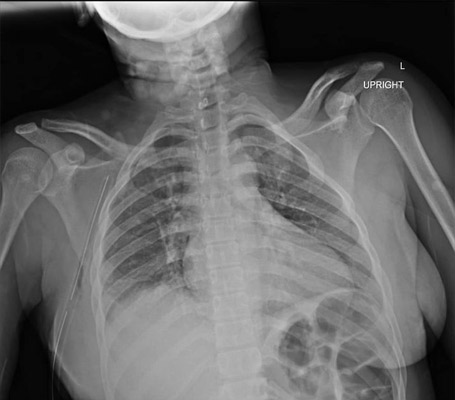
Quiz - 89
# ISCCM Hyderabad Quiz 89🧐
- Q1. Identify the the tracing in pic 1️⃣❓
- Q2. What’s the machine being shown in pic2️⃣❓
- Q3. Who’s the person in pic 3️⃣❓
How is he related to 1️⃣ and 2️⃣❓
Ans1- 1st EEG (Elektrenkephalogramm) ever recorded.
Ans2- First prototype of EEG machine.
Ans3- Dr Hans Berger, a German psychiatrist who’s the inventor of EEG.
Also a discoverer of Alpha rhythm of brain waves.

Quiz - 88
# ISCCM Hyderabad Quiz 88🧐
You are reviewing the X Ray of a patient in surgical ICU who’s admitted with polytrauma.
- Q. What are the various findings on X-ray including lines and tubes ❓
ETT is virtually at the level of the carina and should be withdrawn. Nasogastric tube is in the stomach.
Left intercostal catheter at tip is against the mediastinum and left Pneumocath tip is projected over the heart.
Small bilateral pneumothoraces are present together with multiple bilateral rib fractures.
No right sided intercostal catheter is seen.
Elevated left hemidiaphragm.

Quiz - 87
# ISCCM Hyderabad Quiz 87🧐
- Q1. Who’s the famous Greek philosopher in the painting pic 1️⃣ and what’s happening there❓
- Q2. What’s the plant being shown in pic 2️⃣❓
- Q3. How are both the pictures 1️⃣& 2️⃣ relevant to the “Field of Toxicology” ❓
Ans1- The famous greek philosopher in the painting was Socrates and he is being given the poison Hemlock as a part of death sentence.
Ans2- the plant is Conium maculatum known as hemlock.
Ans3- 1️⃣ & 2️⃣ shows one of the most famous poisons killing a one of the most famous philosophers.
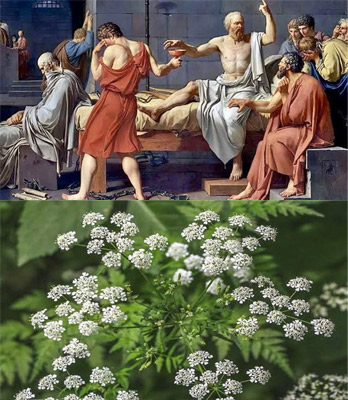
Quiz - 86
# ISCCM Hyderabad Quiz 86
- Q. 64 year old male admitted in SICU post op.
What are the findings in his chest X ray in pic❓
This is a Xray of patient who had Esophagectomy and gastric pull-up performed on the same day earlier.
CXR was done to assess position of central venous catheter, chest drains, and endotracheal tube.
Double lumen endotracheal tube should not be misdiagnosed as ET being malpositioned.
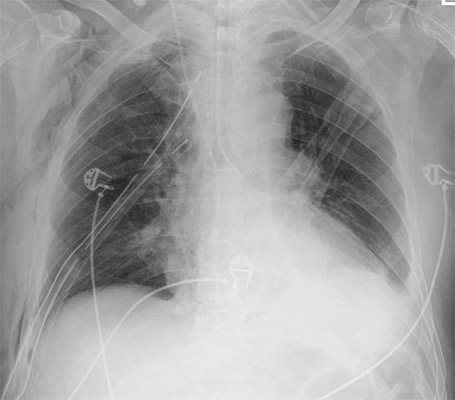
Quiz - 85
# ISCCM Hyderabad Quiz 85
- Q. 65 year old female admitted in ICU.
- Q1. What are the findings in her chest X ray in pic❓
what’s your first step after seeing the X-ray ❓
Ans.1- XRay of female shows
1. right bronchial intubation with complete opacification of the left lung
2. an unusual course of the left subclavian central venous access malpositioned in the left internal mammary vein.
Ans.2- Repositioning of the ETT and chest drainage tube.
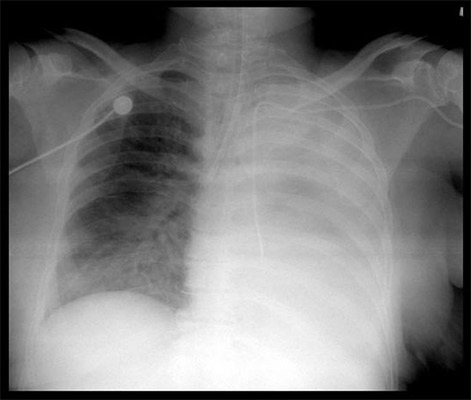
Quiz - 84
# ISCCM Hyderabad Quiz 84
- Q1. Identify the famous physiologist who passed away on this date of 3 rd April 20 years back❓
- Q2. Why is he considered among the greatest in cardiovascular physiology❓
- Q3. What’s the name of the physiology text book written by him and why is it unique in the history of medical publishing❓
Ans.1- Arthur C Guyton.
Ans.2- His research which include more than 600 papers and 40 books led to understanding of most of the cardiovascular disorders like Hypertension, heart failure and others.
He pioneered the concepts of CO, venous return, interstitial fluid pressure, fluid volumes, blood flow auto regulation, renal pressure natriuresis and long term blood pressure regulation.
Ans.3- Textbook of Medical physiology. It’s the best selling physiology textbook in world translated into 15 languages.
Unlike most major textbooks, the first eight editions of the book were written entirely by Dr Guyton which is unprecedented in any medical text.

Quiz - 83
# ISCCM Hyderabad Quiz 83
- 1️⃣. Identify the great person who has recently passed away.❗️
- 2️⃣. What is he famous for which he was recognised by Guinness book of world records ❓
- 3️⃣. What was the famous book written by him ❓
Ans.1- Paul Richard Alexander. An paralytic polio survivor, lawyer and writer.
He was the last man to live in an “Iron Lung”.
Ans.2- He has been recognised by Guinness world records as the person who has spent longest time living in iron lung.
Ans.3- Three Minutes For A Dog, My life in an Iron lung. He has spent more than 8 years writing the book using a plastic stick and pen to tap out on a keyboard or by dictating the words to nurse Norman D.Brown, his friend.
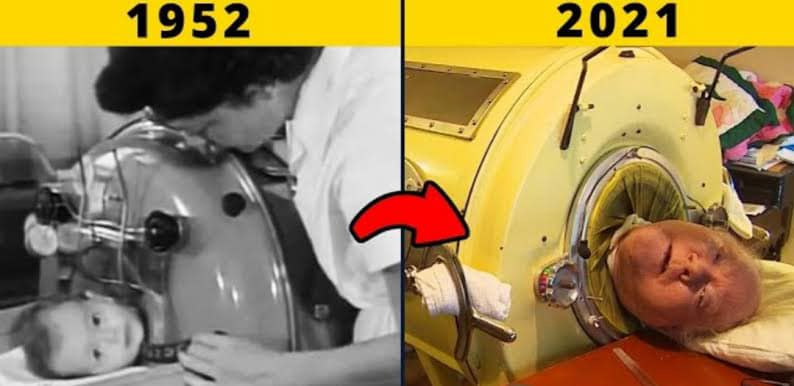
Quiz - 82
# ISCCM Hyderabad Quiz 82
- Q. 75 year old female with history of RTA in ICU.
- What are the findings in her chest X ray in pic1️⃣❓what’s the clinical relevance to the findings❓
Ans.- Multiple bilateral rib fractures seen laterally and right subcutaneous emphysema including gas tracking in the right pectoralis muscle.
Bilateral intercostal catheters have been inserted.
The patient is intubated with the endotracheal tube tip almost at the level of the carina. This should be pulled back a few centimetres for ideal positioning.
While the superior mediastinum appears widened and the aortic knuckle is poorly seen this does not necessarily imply mediastinal haematoma as the patient is supine and significantly rotated.
There is however the suggestion of left apical pleural capping which can be a feature of aortic injury.
Subsequent CT revealed a normal mediastinum and small volume extra-pleural haematoma at the lung apices due to first rib fractures.
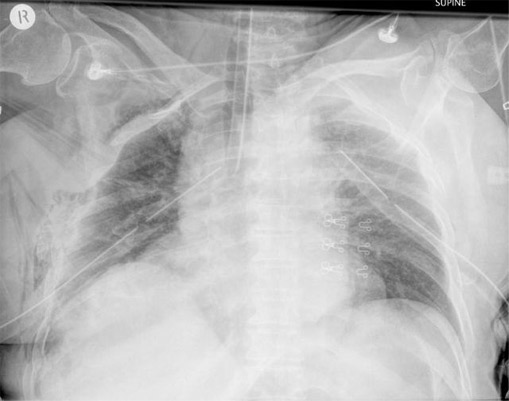
Quiz - 81
# ISCCM Hyderabad 🎅 Christmas special Quiz 81
- Identify the pictures and the medical diseases related to them 🧐❗️
- Clue- All are related to the name christmas 😀
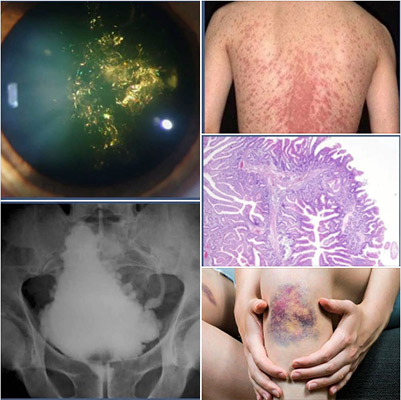
Quiz - 80
# ISCCM Hyderabad Quiz 80
- A 75 year old gentleman presented with shortness of breath, significant weight loss and Pruritic migratory rash as shown in pic 1️⃣.
- What’s the rash showed in pic 1️⃣ ❓
- What does his imaging show in pic2️⃣❓
- What’s the diagnosis of patient ❓
Ans.- He had erythematous skin lesions that appeared in concentric, raised, serpiginous bands, with desquamation.
The rash affected mainly the trunk and proximal extremities.
clinical diagnosis - erythema gyratum repens
CT scan shows a pulmonary mass measuring 59 by 43 mm.
Bronchoscopy with biopsy revealed squamous-cell carcinoma of the lung
Erythema gyratum repens is a rare syndrome typically associated with an underlying malignant condition. It occurs most frequently in conjunction with lung cancer and next most frequently with esophageal and breast cancer.
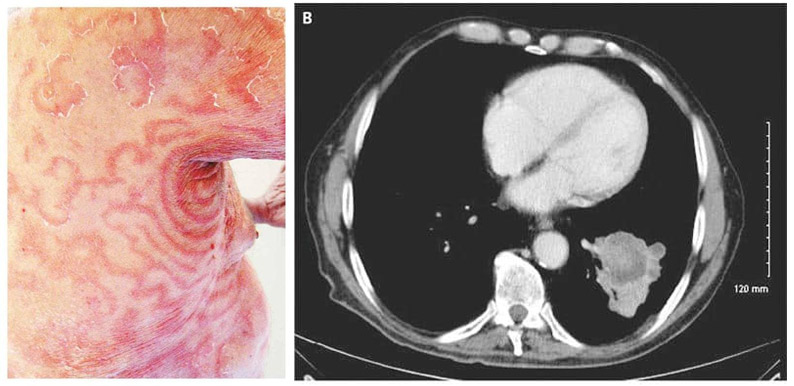
Like on Facebook
Like on Youtube